
Lo Russo Retractors: the device for 100% digital, model-free, efficient, ergonomic and comfortable dentistry!
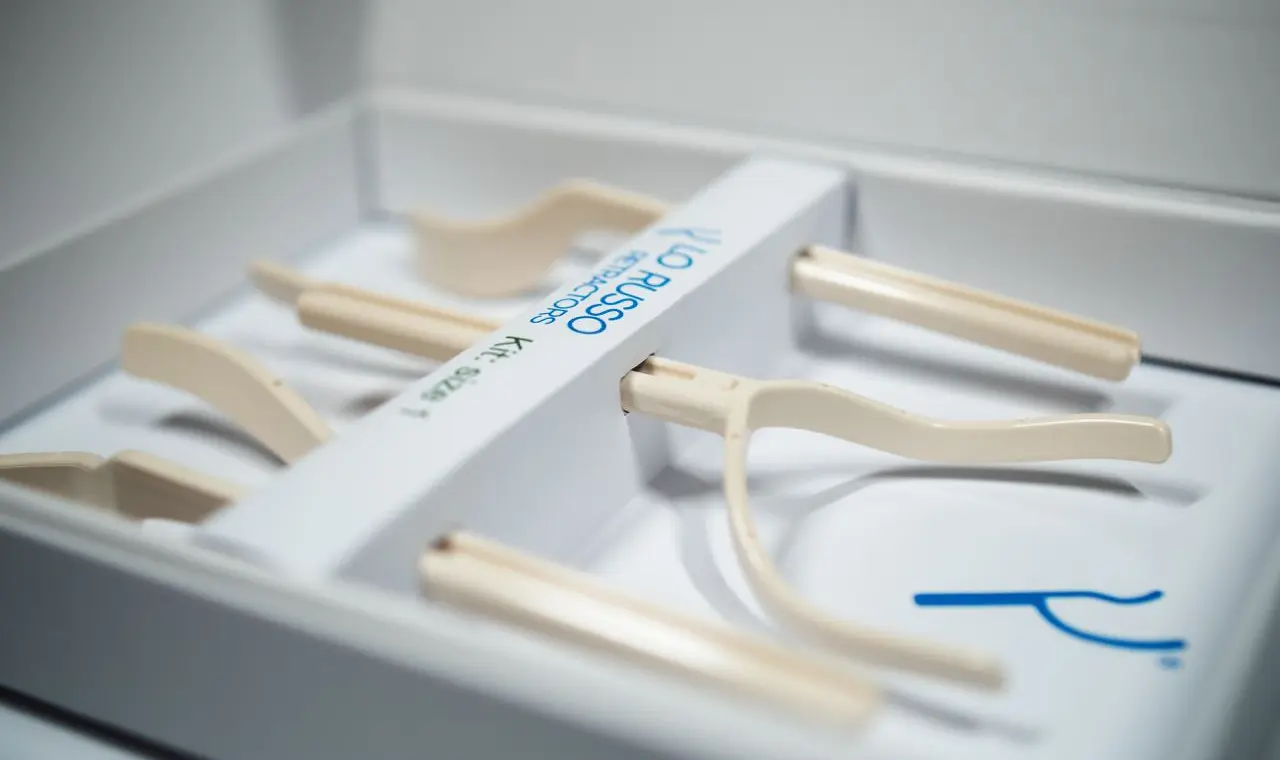
Retractor system for intraoral scanning
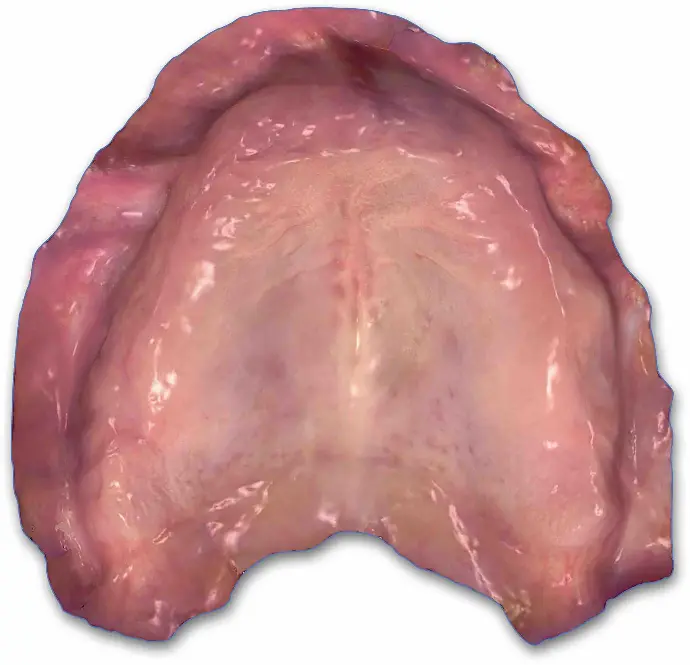
Optimised for edentulous arches
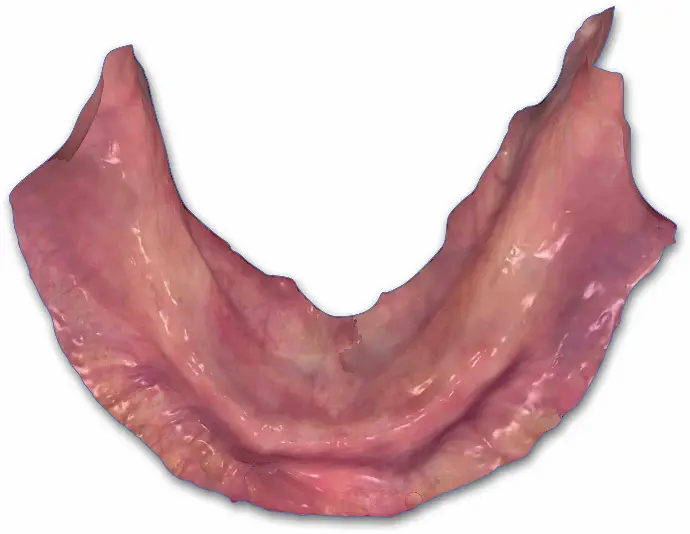
Designed to guarantee excellent results
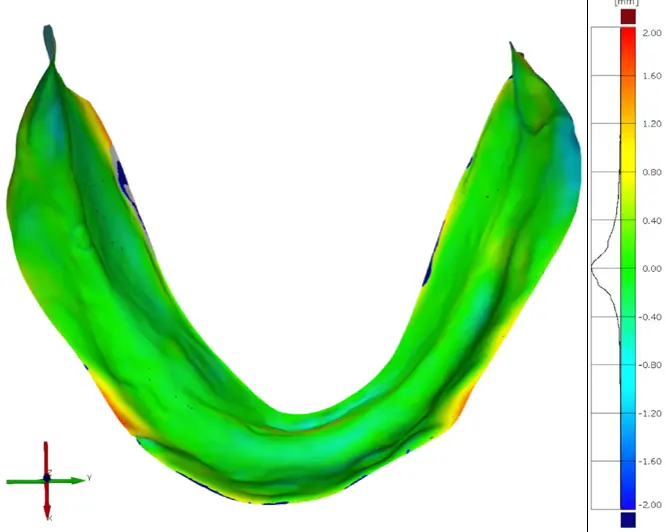
With no compromises on accuracy
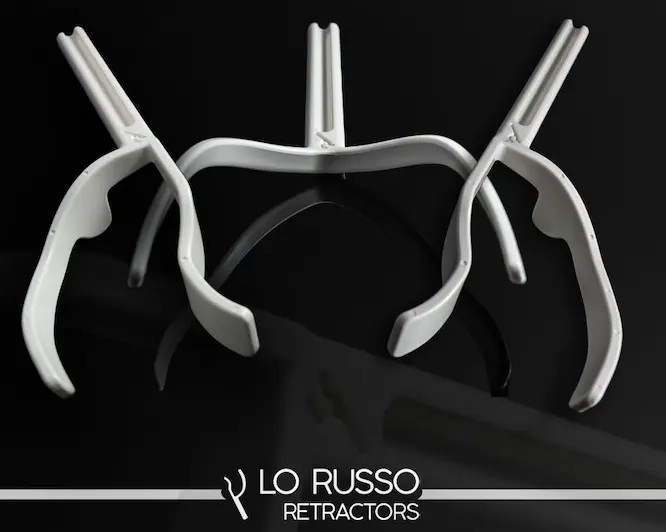
Made with high quality materials
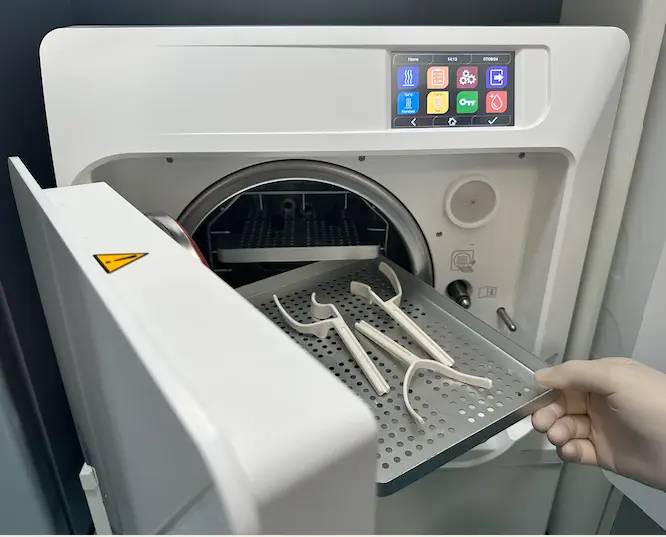
Resistant to more than 1000 sterilization cycles
Why should I use it?
Soft tissue management is an essential factor in intraoral scanning of edentulous arches. Such management involves a number of actions that make effective scanning possible. LO RUSSO RETRACTORS integrate multiple actions on the tissues and functions to assist the scanning equipment and the operator. For these reasons, the use of LO RUSSO RETRACTORS as a retraction system enhances the intraoral scanning experience and enables predictable results both in cases of edentulous ridges and when the presence of involuntary movements, or poor patient cooperation, prevent effective use of the intraoral scanner.
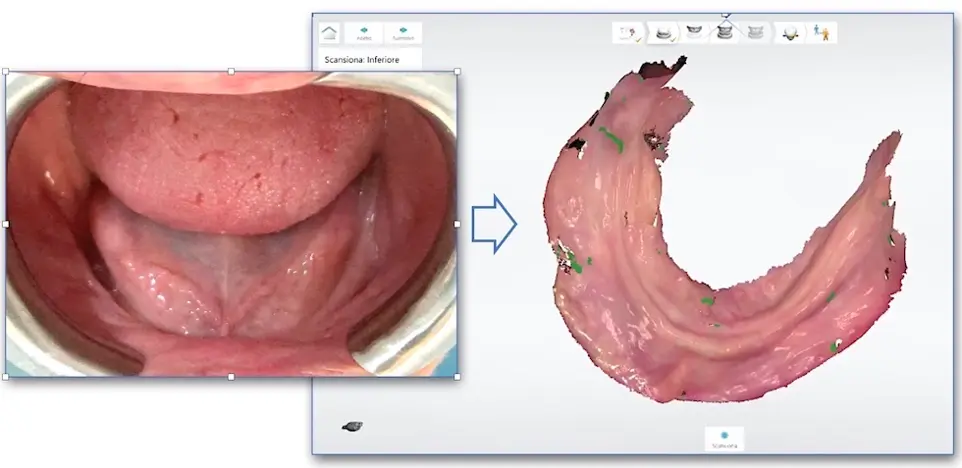
Why using LO RUSSO RETRACTORS retractor system?
RETRACTS TISSUES
Dislodges the surrounding tissues away from the arches
GUIDES THE SCANNER MOVEMENT
The shape of the device complements the scan path and can help in performing proper movement with the scanner
STABILIZE TISSUES
Holds mobile tissues in place.
KEEPS THE DISTANCE FROM THE RIDGE
The supporting function together with the guiding function facilitates maintaining an adequate distance from the ridge
SUPPORTS SCANNER TIP
The scanner tip can be rested on the device, this stabilizes it
EXPOSES THE SCANNING FIELD
The edentulous ridge becomes easily accessible to the scanner tip
Can LO RUSSO RETRACTORS be reused?
Yes, definitely. Lo Russo Retractors can be sterilized in a steam autoclave for up to 1000 cycles with no modifications.
LO RUSSO RETRACTORS system is composed by:
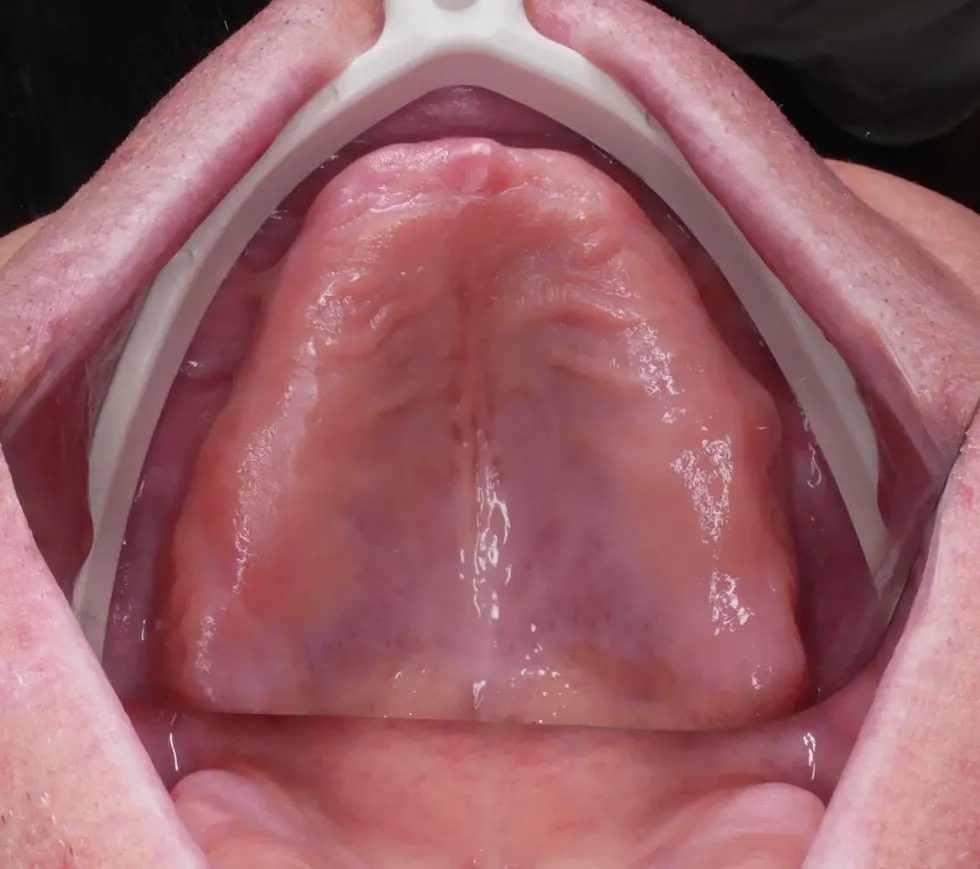
UPPER ARCH INSTRUMENT
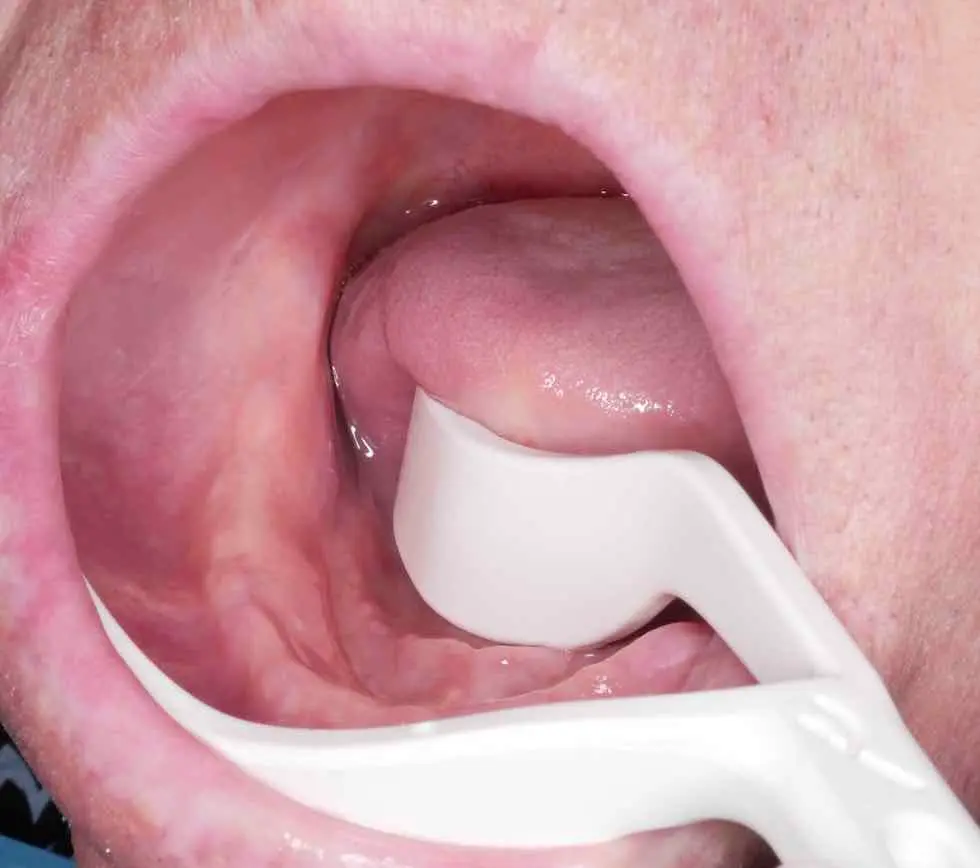
LOWER ARCH INSTRUMENT
(patient right side)
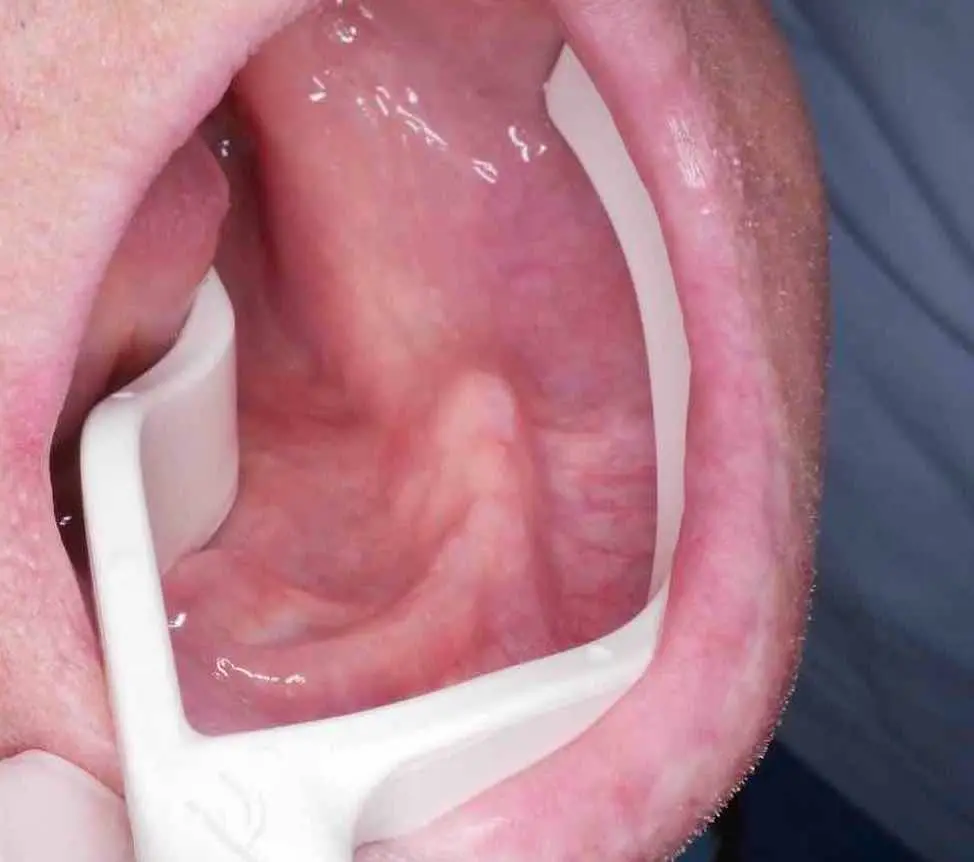
LOWER ARCH INSTRUMENT
(patient left side)
The different sizes of LO RUSSO RETRACTORS differ only in dimensions. The three sizes of the retractor system are necessary to be able to adapt to the individual anatomical variability of the alveolar-dental arches.
The smallest measure is 0, the largest measure is 2.
For the optimal support of the intraoral scanning process of edentulous arches, you need the device that best fits the anatomy of the specific case; therefore, it is desirable to have all three sizes.
Trying out every single component of the retractor kit. It is necessary to verify that the individual instruments:
- can be inserted easily and without creating trauma
- fit properly and allow you to adequately expose the entire field you are going to scan
Of course. On the handle of the instruments, on the side opposite the logo, there are small raised indications (visible and appreciable to the touch) which identify the size of the instrument (no raised indication: size 0; one indication: size 1: two indications: size 2). Sometimes, the different measures can also be distinguished by different colors of the instruments.
Yes. Our retractor system is also useful in patients with totally or partially preserved teeth, when the presence of involuntary movements, or the patient's lack of cooperation, prevent an effective use of the intraoral scanner.
Which scans can I use LO RUSSO RETRACTORS for?
The retractor system LO RUSSO RETRACTORS is useful in all cases in which the presence of mobile tissues, involuntary movements, or lack of patient cooperation prevent effective use of the intraoral scanner.
Here you are some examples of use in various areas of application on edentulous arches, in the presence of natural teeth or implants:
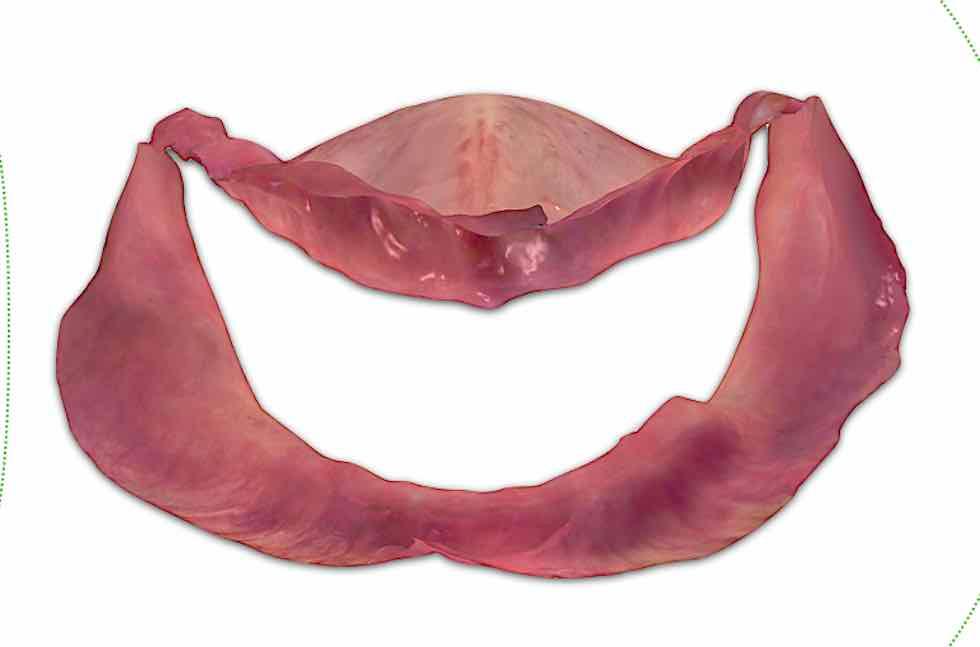
EDENTULOUSNESS
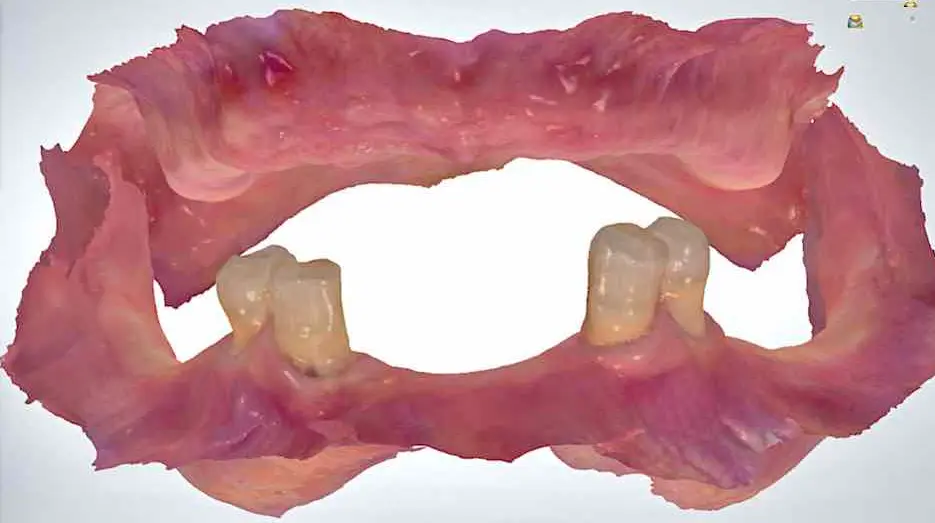
PARTIAL EDENTULISM
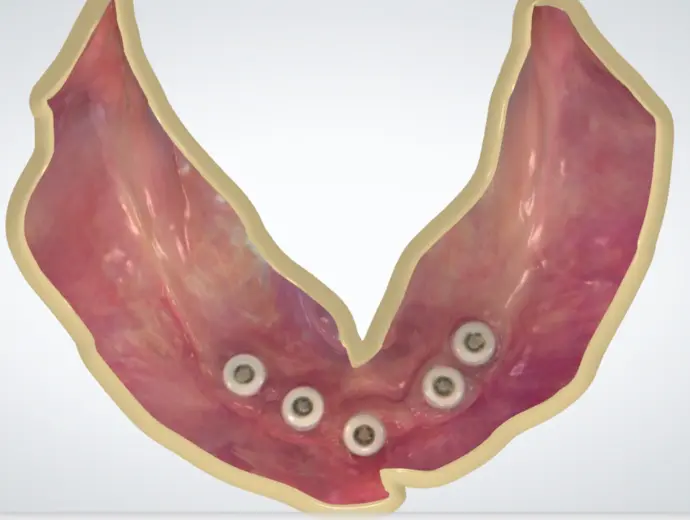
PROSTHESIS ON IMPLANTS
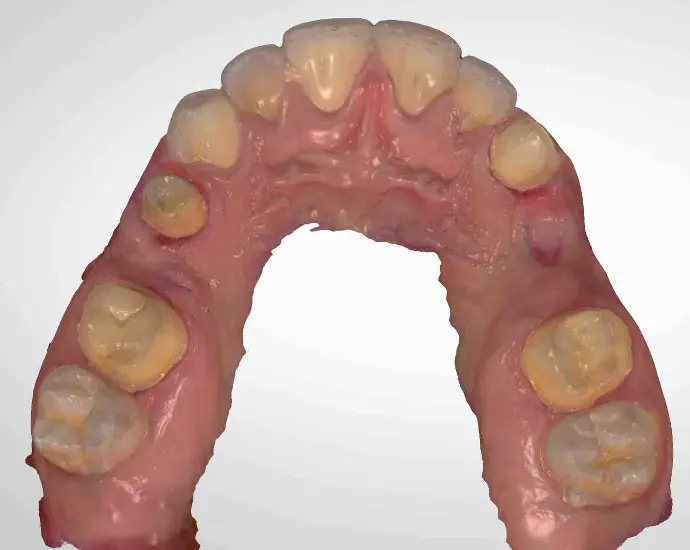
FIXED PROSTHESIS
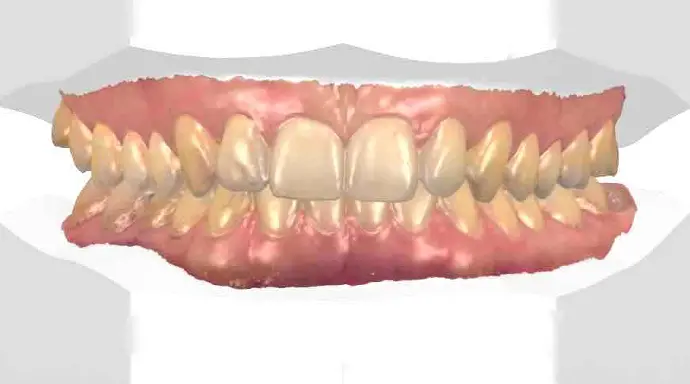
ORTHODONTICS
How to use LO RUSSO RETRACTORS ?
The kit has been designed and manufactured exclusively for professional use during dental activities. The tools that make up the kit are intended to be used exclusively by healthcare personnel in the dental sector, qualified to practice dentistry and related clinical activities. For correct use, carefully read the manual and instructions for use.
Di seguito sono riassunte le modalità e le istruzioni di utilizzo.
BEFORE USE:
Inspect the retractorsBefore using the tools that make up the retractor kit, the latter must be inspected to identify any defects (for example: worn parts, loss of parts, shape changes or color variations); in the presence of any alteration, the device must not be used. To activate the warranty program, please use the contact form here.
Before each use, the instruments must be sterilized following the instructions given in use and maintenance manual.
USAGE :
Make a careful examination of the patient's mouthBefore using the retractors, it is necessary to inspect the patient's oral cavity: it is necessary to make sure that there are no mucosal lesions. Furthermore, removable prostheses, other removable equipment or any other device or obstacle present in the patient's mouth must be removed.
Great care must be taken in identifying the appropriate instrument for the arch to be scanned intraorally:
- Each LO RUSSO RETRACTOR kit consists of three instruments: two for the mandibular arch (one for the right side and one for the left side), and one for the maxillary arch.
- First of all, it is necessary to identify the appropriate instrument for the arch to be scanned.
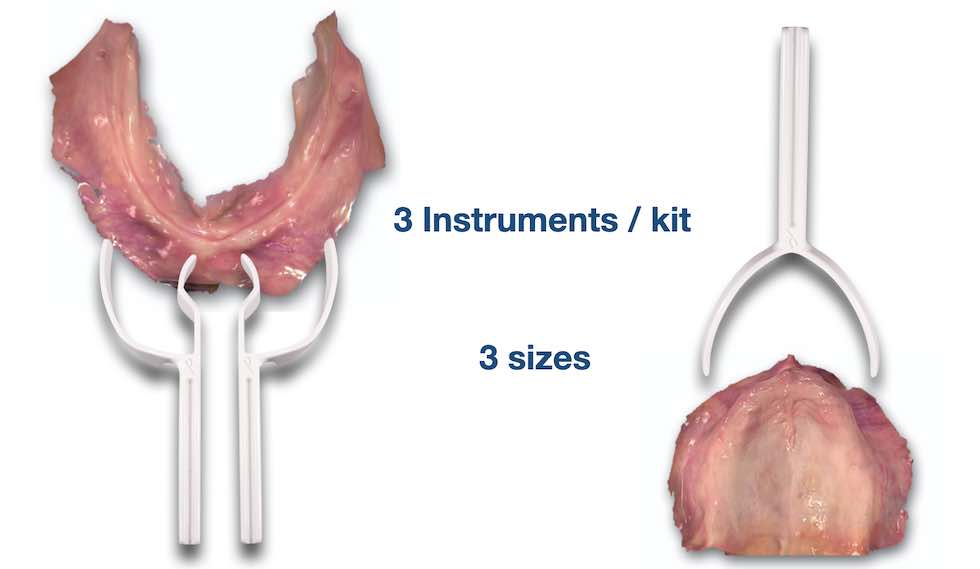
- For the lower arch it is necessary to distinguish the instrument for the right side and that for the left side. The two instruments are indispensable for performing the intraoral scan of the edentulous mandible according to the two-stage strategy described for it. The distinction is very simple and intuitive, just let yourself be guided by the analogy between the shape of the side arm of the instruments for the lower arch and the shape of the arch: remember to keep the logo engraved on the handle of the instruments facing you .
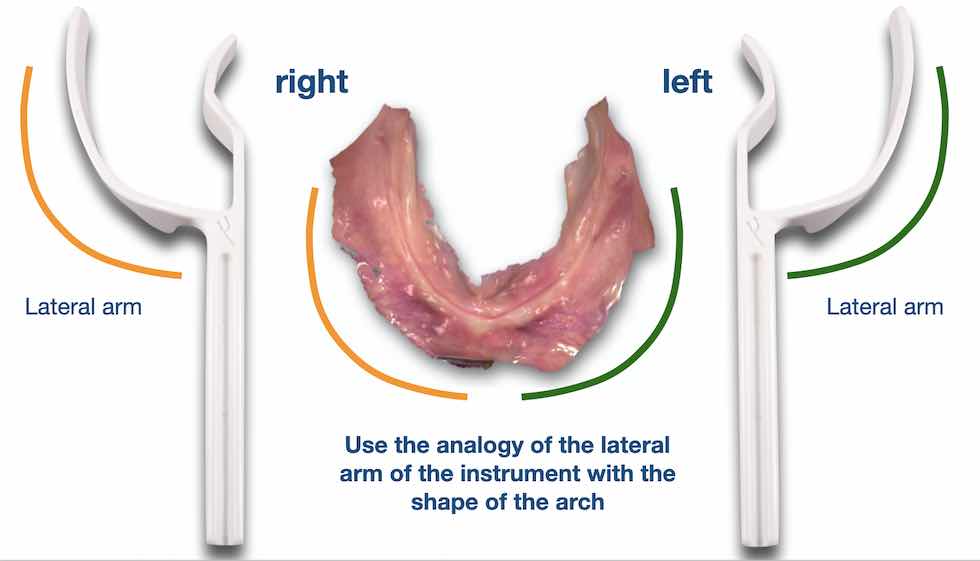
Select the most appropriate size of the retractors, based on the size of the patient's alveolar-dental arches: sizes that are too large could create compression or injury to the tissues. Refer to the indications previously reported on this page for the selection of the size.
It is worth noting that on the handle of the instruments, on the side opposite the logo, there are small raised indications (visible and appreciable to the touch) which identify the size of the instrument (no raised indication: size 0; one indication: size 1: two indications: size 2).
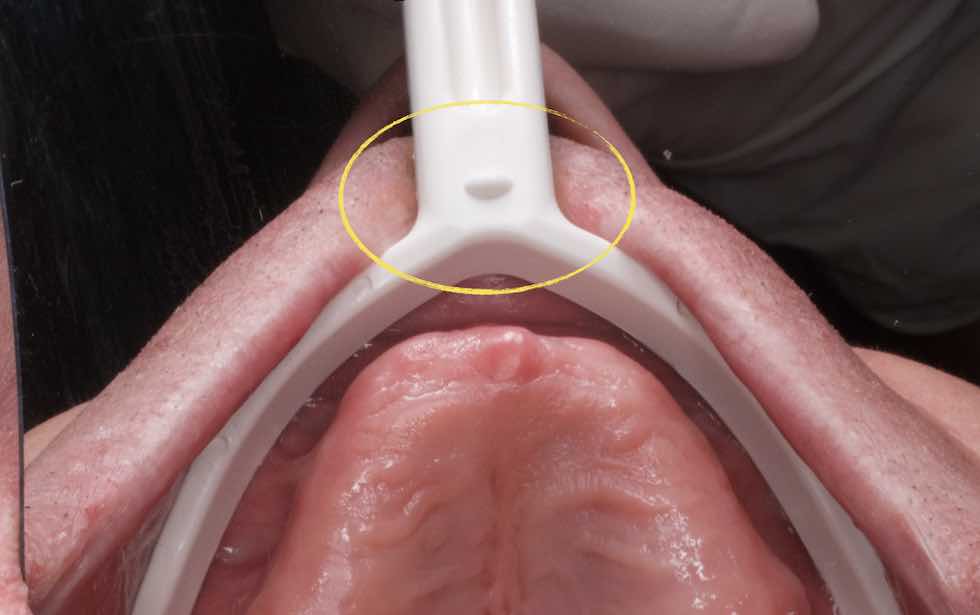
To ensure correct orientation of the instruments, the engraved logo on the handle must be facing the operator.
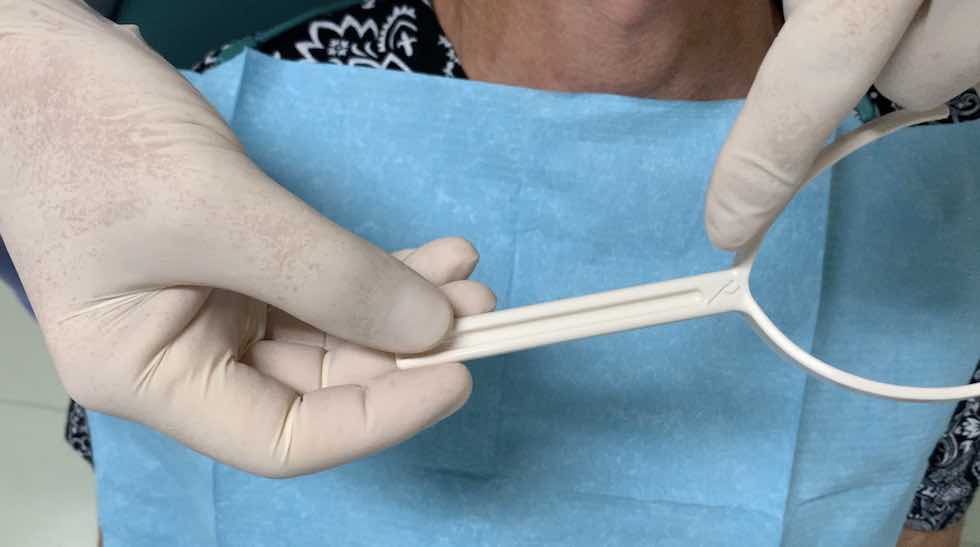
This activity must be performed slowly and carefully. The correctly oriented instrument is inserted into the patient's mouth by making a small rotation movement of its arms, similar to how you would do with an impression tray. Do not flex the arms of the instruments during insertion into the mouth: the springback could cause injury to the patient. Remember to keep the logo engraved on the handle of the instruments facing you.
HOW TO INSERT THE INSTRUMENT FOR THE MAXILLARY ARCH
HOW TO INSERT THE INSTRUMENTS FOR THE MANDIBULAR ARCH
Once inserted in the oral cavity, the instrument must be placed in position: for the upper arch, the two arms must be housed in the vestibule; for the lower arch, the anterior arm should be lateral to the tongue, while the lateral arm should be in the vestibule (check the videos for the maxillary arch ed mandibular arch showed in the previous step). Once in its final position, the instrument must be held firmly, without ever letting go and without using excessive pressure.
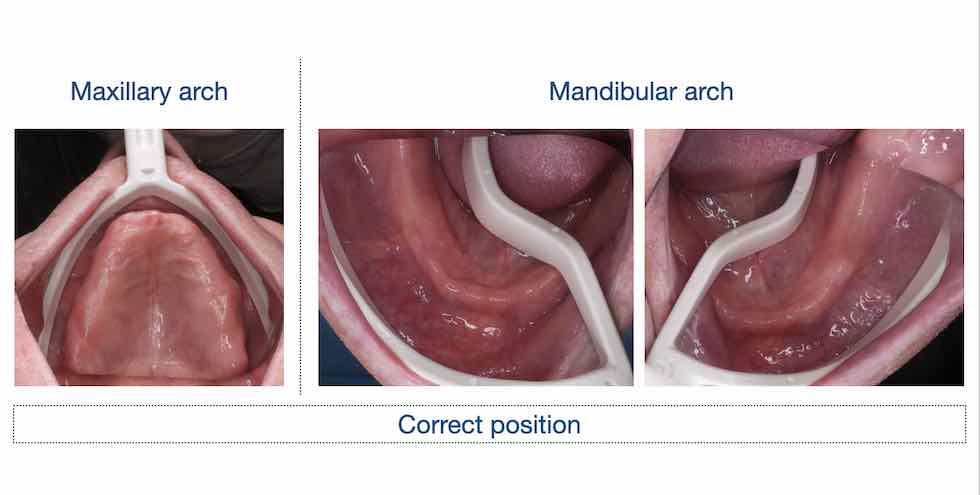
It should be noted that for the lower arch, in order to reach the correct final position, the instruments must not be oriented parallel to the sagittal plane, but according to the diagram shown in the following image.
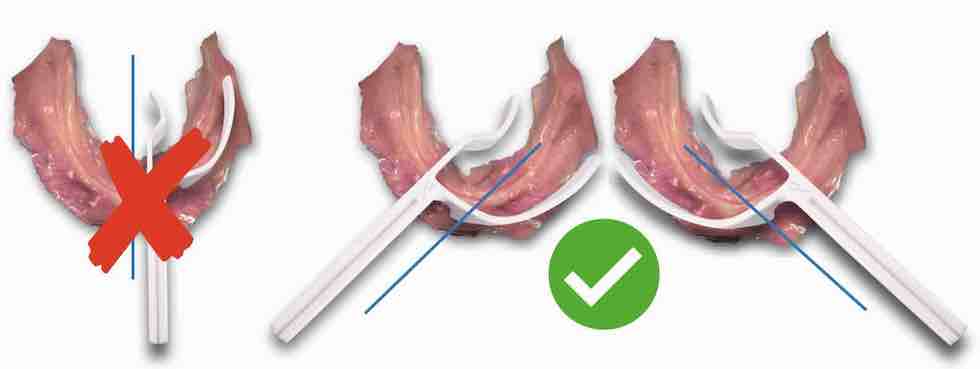
After using the instrument, it must be removed with caution, with a movement opposite to that of insertion.
Correct cleaning and sterilization of instruments, before and after each use, is a fundamental prerequisite for protecting the health of patients and staff. Always refer to the instructions given in use manual, and the specific operating procedures for the healthcare facility and required by local legislation.
WARNINGS:
Before each use, the instruments must be sterilized following the instructions given in use and maintenance manual.
The instruments that make up the LO RUSSO RETRACTOR retractor kit must always be used with the utmost attention by healthcare professionals qualified to practice dentistry and the clinical activities connected to it. These operators must comply with the recommendations in the use manual. In particular, it is mandatory:
- Respect the locations and orientation of use of the various instruments in the kit: the protrusions of the instruments, if oriented improperly or used incautiously, could cause trauma or injury to the patient's tissues.
- Do not apply improper pressure to the ends of the tools: they could be damaged or broken.
- Do not try to bend or modify the shape and size of the tools through the action of mechanical forces, thermal or chemical agents: the strength and safety of the tools would be irreversibly compromised.
- Instruments inserted into the patient's mouth must be held securely; instruments left loose in the patient's mouth, or not properly held, could move and cause damage, trauma or injury to the patient.
- Instruments should not be placed between the teeth, nor should the patient squeeze or chew on them. The patient's teeth or tissue could be damaged or traumatized, and the instruments could suffer irreversible damage.
To report any problems that arise during the use of our devices, use the appropriate contact form for forwarding reports related to post-marketing surveillance.